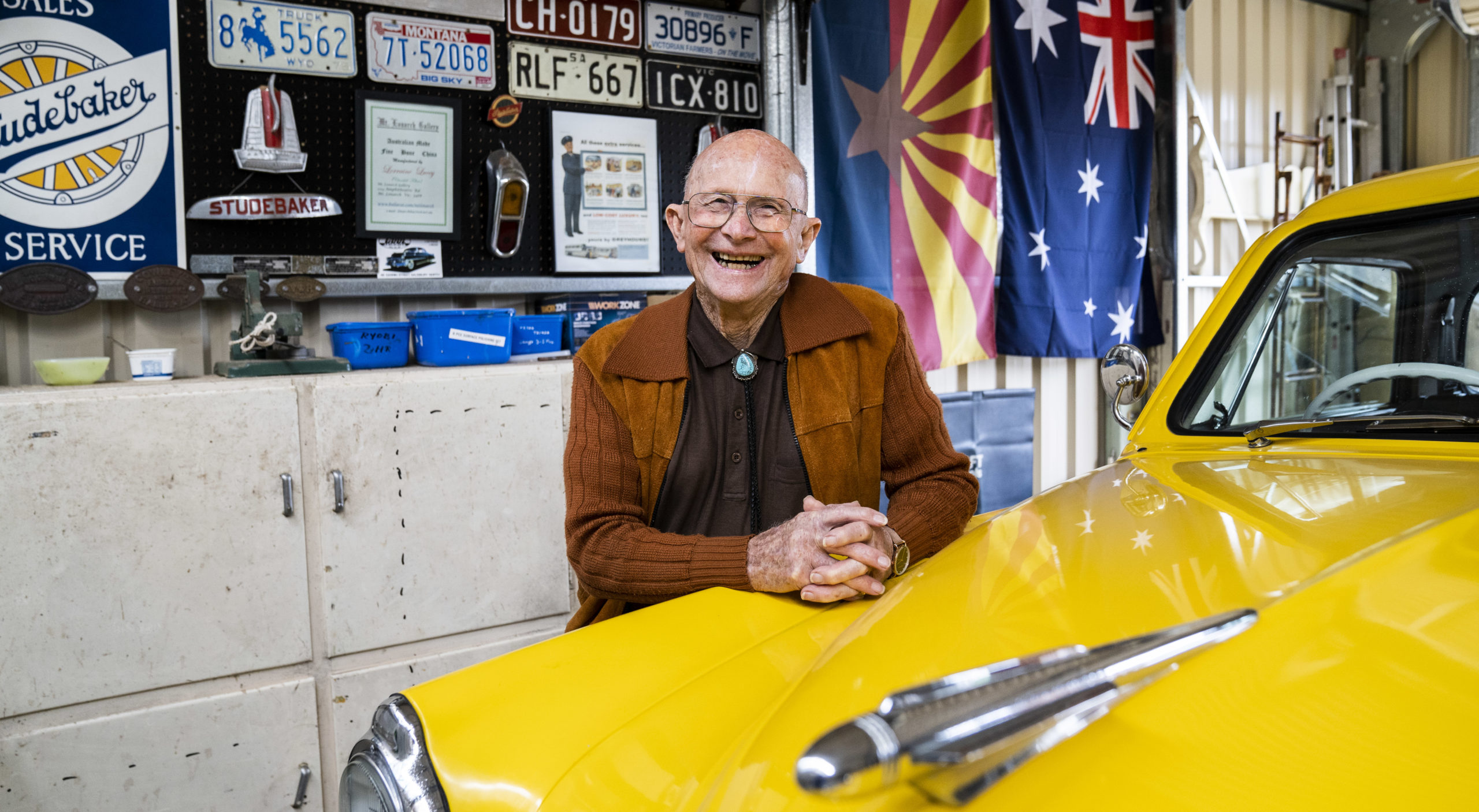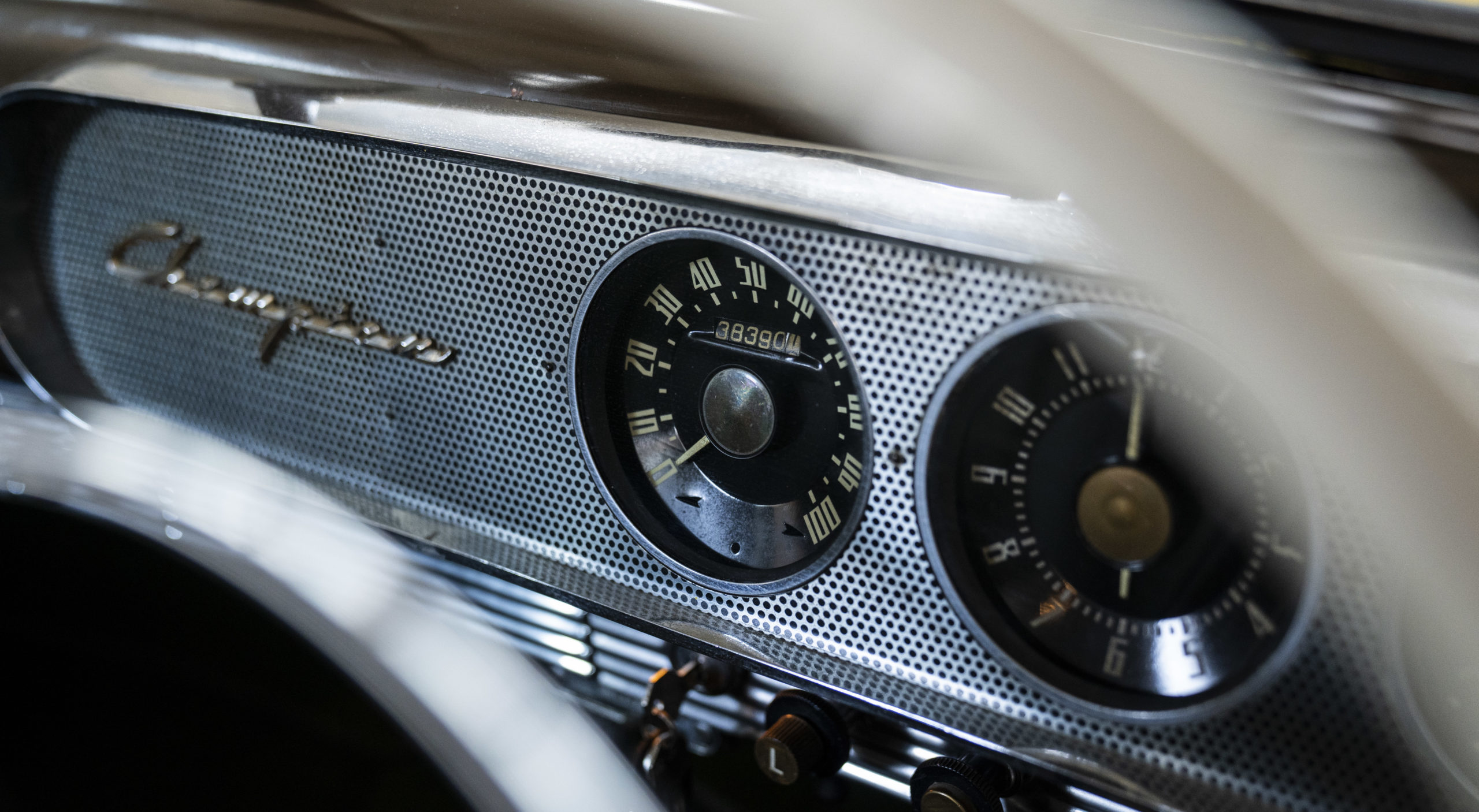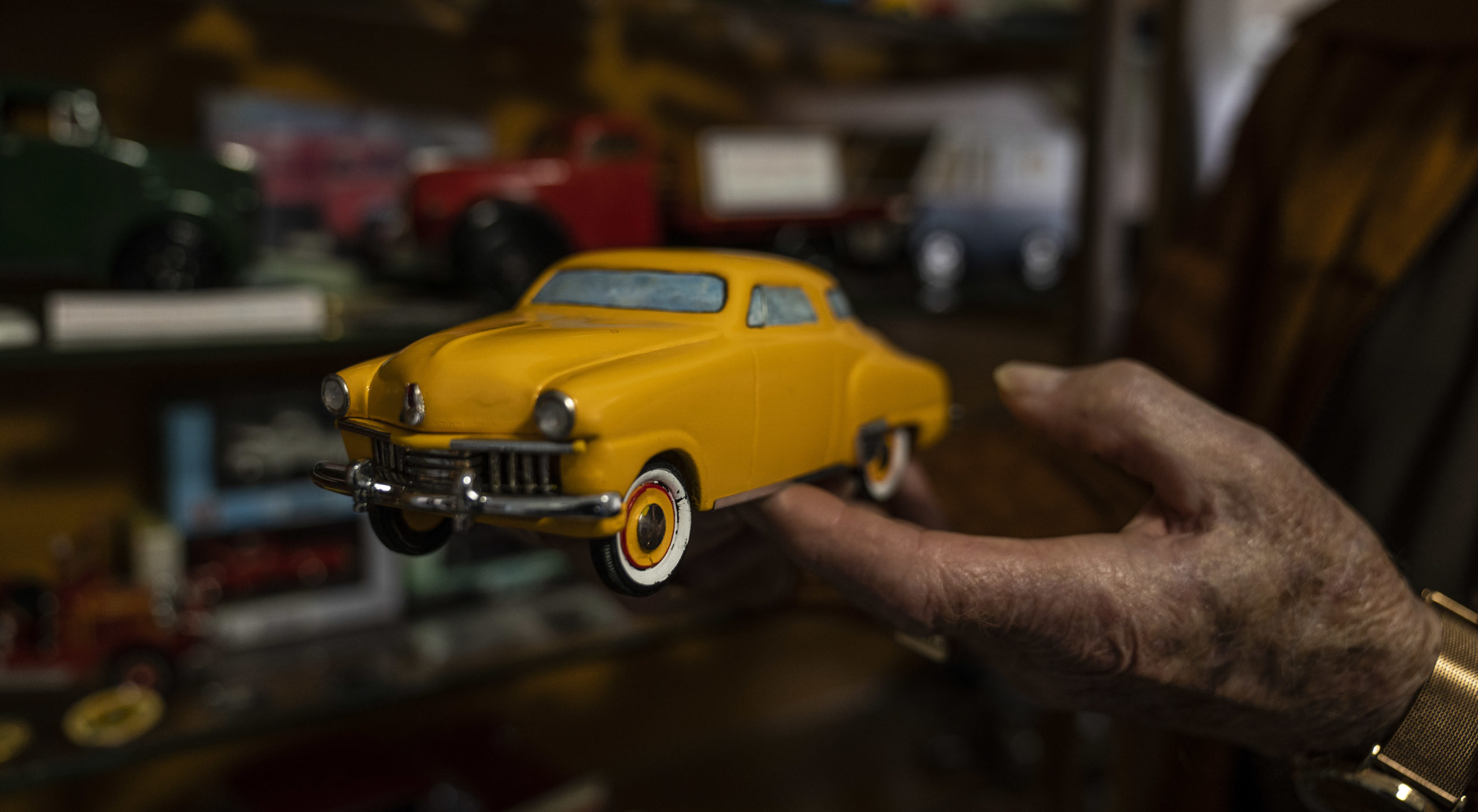In My Garage

Peter Lucey is an artisan who’s held a passion for Studebakers for most of his 86 years. Having transformed his beloved 1947 Studebaker 6G from a basic body to the historic steed it is today, this American beauty is now among his proudest works.
“It was a love affair from the beginning,” Peter says as the garage door creaks open, slowly revealing the canary yellow rarity within.
“When I was 12, these were brand new,” he says with a smile, opening the passenger door to reveal the pristine interior.
Dark-green, vinyl upholstery contrasts beautifully with the tortoise-shell sheen of the dash, featuring switches for lights, blinkers and wipers.
“In 1947, as a small boy, I looked with absolute awe [at the 6G] through the window of Champion Motors in Light Square and said to myself, ‘One day I’ll own one of these’.”
He wasn’t wrong, purchasing his first Studebaker in the early years of his marriage, in the ’60s.
“When I bought it, it was just a body, but then I stripped it down to nuts and bolts and I virtually climbed up the exhaust pipe, as I like to put it,” he says with a grin.

“[My wife and I] have been married for 59 years in August, so I’ve conservatively had it for over 55 years.”
It’s one of six Studebakers Peter’s owned in his lifetime. He also collects and handmakes models – his collection now surpassing 150.

Peter knows almost everything there is to know about these classic cars, in particular, his own.
Originally founded in 1852, Indiana car company Studebaker enjoyed success for around 150 years. Before 1939, Studebaker bodies were built by T.J. Richards in Richmond, Adelaide, while chassis were sent here from Indiana. Later, after World War II, the bodies were shipped from the US via Los Angeles, as ‘CKD’ or completely knocked down. They were then assembled, once again, by Richards.
“My sister was Mrs Richard’s hairdresser,” Peter says with a chuckle.
“I think I’ve traced this car back, and it belonged to Roy Sands. When I got down to the bottom colour that it originally was, it was deep navy blue – same as Roy’s.”
Roy Sands was a well-known Adelaide speed car driver who raced at Rowley Park Speedway, and owned Sands Motel on Glen Osmond Rd.
While the car was but a shell when he bought it, it was still a valuable investment.
“They weren’t cheap… I believe a 1948 Chevrolet [from new] was about £750, and I think one of these Studebakers was about £1400, so they were quite expensive [for the time].”
Nowadays, Peter’s Studebaker is one of only six (of this model) in the country, a fact he’s rightly proud of.
“When I bought this, it was a complete and utter wreck,” he says, running his hand over the boot’s unique curves which he explains were a world-first design.
“I spent about 6500 hours fixing it… one of the biggest jobs I did was remaking the entire wiring loom.”
With no mechanical training, Peter says it was all about using his brain and his hands. Manual craftsmanship is something Peter is wellversed in, instilling patience, commitment and attention to detail into every task he undertakes in life.
“I started off [in] life making reading glasses. I then drove for Pioneer Tours for many years, when we used to have 1000 miles of dirt across the Nullarbor.”
After living and working on a Victorian farm while raising their family, he and wife Lorraine began a business crafting fine bone china.

“We were both lucky to have talented parents, and we both like doing things with our hands,” he says, proudly showing paintings hung about the house by his own mother, and pieces of china by Lorraine.
His admiration for art and design is evident in his commitment to restoring his American motor relic.
“My model was always known as the famous Raymond Lowe Coupe. Loewy was ‘the man who designed everything,’ from the Coke bottle to sewing machines.”
Like many true Studebaker fans, Peter credits the famous American automobile designer Virgil Exner for his car’s design (in 1942). Exner worked under Loewy, whose studio was responsible for designing Studebakers. But Loewy always remained the face of the company, despite Exner’s designs often being the final drafts chosen.
“The design of the 6G is so different… there’s not one like it,” Peter says.
“Plus, it’s a very comfortable car to drive.”
“It was just his [Exner’s] imagination of design really… he was a fabulous designer of motorcars.”
Peter keeps his passion for Studebakers alive with his carved wooden models.
“Having been affected by the bug of modelling my own, who knows where my love affair may end? We’re only limited by our own imagination.”

